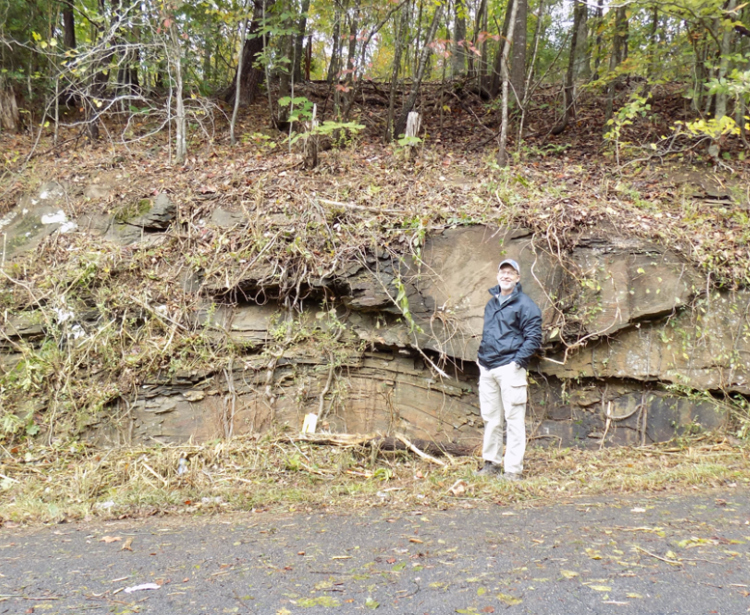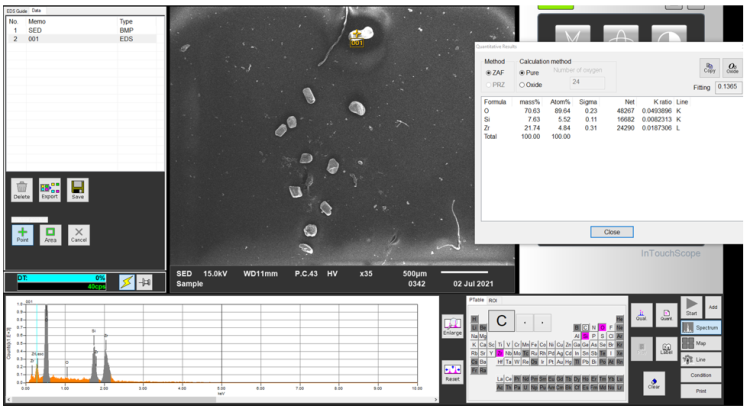Valarie J Smith - Project Profile
Valarie J Smith - Project Profile
2020 AGeS awardee
Florida State University
Under the guidance of Dr. James Tull
What scientific question(s) does your research address and what motivates this work?
The central question of this research addresses the timing of the onset of (extensional) accretionary orogenesis/active tectonism and metamorphism following approximately 400 m.y. of rift to drift/passive margin evolution in the southern Appalachian orogen using U/Pb radiometric dating.
Lithotectonic terranes of the southern Appalachian orogen (SAO) are thought to occur in unique geologic settings distinct from the northern Appalachian orogen (NAO). Historically, the NAO tectonic Ordovician A-type subduction model for the Taconic orogeny has been applied to the SAO. However, this model is not compatible with contemporaneous accretionary affinity terranes of the SAO. The SAO requires a B-type subduction model for the Ordovician/Silurian southeastern Laurentian margin. Past studies of rift-drift, back arc basin, and volcanic arc sequences of the SAO indicate that these terranes may have experienced a common tectonic evolution. If a temporal relationship between terranes can be established, it may suggest that these terranes are all part of, or impacted by, the same geodynamic setting. This study examines the age relationship of the Marble Hill Hornblende Schist, an enigmatic metavolcanic unit which sits directly above a regional unconformity and Neoproterozoic to Cambrian rift to drift/passive margin facies in the southern Appalachian Blue Ridge terrane.
What chronometric tool did you employ and why?
The chronometric tool used for this project is the Laser Ablation with Inductive Coupled Plasma Mass Spectrometry (LA-ICPMS) employed by the United States Geological Survey in Denver, Colorado. This radiometric dating method was chosen for the real in situ rapid, precise, and accurate measurements for zircon U-Pb geochronology.
The zircons used in this geochronological study exhibit complex morphologies that suggest a history of primary igneous formation and metamorphic/hydrothermal alteration. Using LA-ICPMS with a low laser wavelength with a low duration of pulse, lowers the inter-element fractionation associated with zircon grains that have a complex history and/or inherited cores. Combining a static operating mode with the use of a < 213 nm UV laser beam and ICPMS multi-ion counting system, common precisions can be achieved for the key ratios 207Pb/206Pb and 206Pb and 238U that are better than 1% and 3% (2σ) respectively. This includes error propagation associated with standard normalization. Common-Pb correction is proposed according to the age of the zircon and according to the Th/U ratio of the grains.
What were some of the key takeaways of your research?
- Zircons are difficult to find in silica undersaturated alkaline basalts, but with enough material and patience, they can be found.
- The Marble Hill Hornblende Schist metavolcanic unit and its feeder dike/sill at the base of the youngest successor basin sequence in southern Appalachian orogen western Blue Ridge terrane yields an approximate age of 424 Ma.
- The geochemistry of the Marble Hill Hornblende Schist and the feeder dike below are chemically similar to back arc basin alkaline basaltic rocks erupted in modern/Cenozoic extensional settings supporting the tectonic framework of the southern Appalachians during the Silurian as an active accretionary tectonic system.

What new experiences, opportunities, and collaborations did you gain as an AGeS-Grad awardee?
This project began with several challenges, most significant was the timing of the AGs2 award. I received the award at the beginning of the COVID lockdowns. Therefore, I was not able to travel to the analyzing lab and witness firsthand the analytical procedures for zircon radiometric dating. However, I did get to spend a lot of time on the phone and computer conferencing with the analyst working on my project. I also spent a lot of time working with another professor at Columbus State University who allowed me to use the equipment in his lab and taught me how to properly separate mineral grains from a whole rock fraction. I learned how to set up and use a gravity shake table, Franz magnetic separator, and a scanning electron microscope (SEM) to verify the elemental composition of collected mineral grains. As a result of the work that I did with my PI, the USGS analyst in Denver, Colorado and the professor at CSU, a collective research paper was produced and is currently in review. I also received a teaching position at another university and believe the work that I did through this project was a contributing factor to the successful hire.

What is one piece of advice you have for future AGeS-Grad award applicants or awardees?
Regardless of the meticulous planning of a project, obstacles occur and have the potential to derail your progress. But do not give up, ask for assistance, and accept these challenges as opportunities to learn and grow as a scientist.

